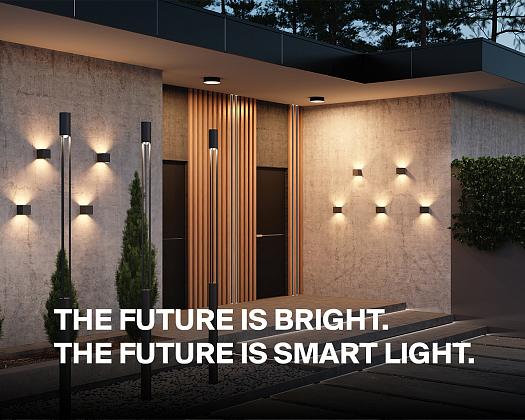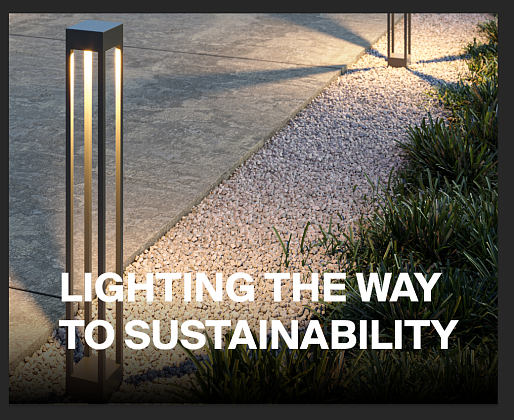
The role that natural and artificial light plays in our sight is well known. But its impact goes far beyond vision and there is much research into light's powerful non-visual effects on humans.
Light can enhance cognitive function; boost energy and alertness; promote relaxation; improve mood; and regulate sleep-wake cycles (our circadian rhythms). It significantly influences our wellbeing and performance. When we combine light’s effects on the visual, biological and emotional, we start to see its true value.
What is Human Centric Lighting?
Human Centric Lighting (HCL) describes lighting designed to deliver this full range of benefits. It is tunable, so it can get brighter and darker throughout the day, and works through a combination of intensity, brightness and temperature. A human centric approach isn't one-size-fits-all, and depends on the people using the light, the time of day and the specific space. Effective HCL sees these factors integrated into lighting designs.
Our circadian rhythms follow the sun’s movements - simply put, we wake in the morning as the sun rises, become more alert during daylight hours and start preparing for rest and sleep as the sun goes down. HCL mimics the role of natural light in a particular space, getting lighter and darker at certain points throughout the day and night. This is far more beneficial than being exposed to a fixed amount of artificial light that isn’t bright enough.
If we take a look at the amount of light emitted naturally versus artificial light, the difference is quite staggering. If we were to spend all day outdoors on a sunny day, we’d be exposed to 100,000 lux (10,000 on a cloudy day). Lux is a measurement of light intensity, and some comparisons of .
A typical classroom, however, has a mere 250 lux. Of course, it’s not practical for everyone to be outdoors all day, every day, so the next best option is to improve our artificial light. Equally, we don’t want to be exposed to 100,000 lux all the time – we’d really struggle to sleep.
Benefits of HCL
As we know, light has several benefits for our physical, psychological and emotional wellbeing.
- Vision – the right amount of light helps our eyes function better. HCL can provide a steady light at the optimum level which allows for clearer vision and better performance.
- Productivity – has shown that HCL can increase productivity in the workplace, as well as decreasing errors, accidents and illness. It can substitute daylight which in turn positively affects mental health and boosts cognitive ability. It can also help us keep alert and focused when busy without being over stimulated.
- Sleep – greater exposure to daylight during the day can improve sleep quality. Because HCL can provide an optimum level of light, this can help us get to sleep quicker and also sleep more soundly.
- Mood and wellbeing – exposure to natural light has a positive impact on our mood and general sense of wellbeing. Too little can leave us lacking in energy and prone to bouts of depression – seasonal affective disorder (SAD) is a prime example of this. But because HCL mimics the natural changes of daylight, this helps serotonin levels even out, making us feel happier and more balanced.
HCL can be beneficial in a number of settings: in hospitals, to help patients recover better and reduce hospital stays; in schools and colleges, keeping students alert, receptive to and more able to retain information; in retail outlets, influencing customer buying decisions; and in homes, illuminating spaces and providing a smooth transition between artificial and natural light.
Advances and innovation in HCL
HCL equals a real breakthrough in how we use light in our lives. When we combine it with smart lighting systems and technology, we begin to see huge benefits. Sensors and tunable LED technology within smart lighting systems mean light intensity, spread and colour temperature can be adjusted depending on the time of day and the needs of the people. Using AI algorithms can also allow the lighting to be changed according to geographical location, weather and specific individual needs.
HCL and lighting design
To take advantage of HCL’s full benefits, we need to see it thoroughly incorporated into the fabric of a building – considered in the original design, architecture and, of course, the lighting system. At we design all our lighting with this in mind – ensuring our lighting solutions and systems are energy-efficient, emit the correct amount of light needed to illuminate required areas, and are long-lasting through high quality manufacturing.
Smart lighting is the perfect way to approach this, allowing aesthetics to meet human centric light delivery and performance. By considering how each room in a building is used, HCL can adjust during the day and evening, enabling a comfortable environment.
As smart lighting systems continue to develop and we become ever more attuned to the benefits HCL has on our wellbeing, we are looking forward to exciting times in the future of lighting design.





